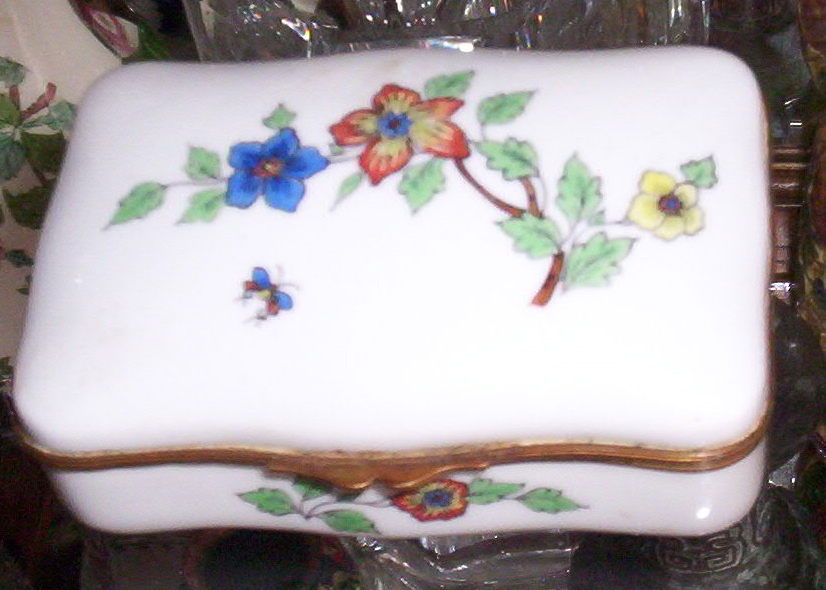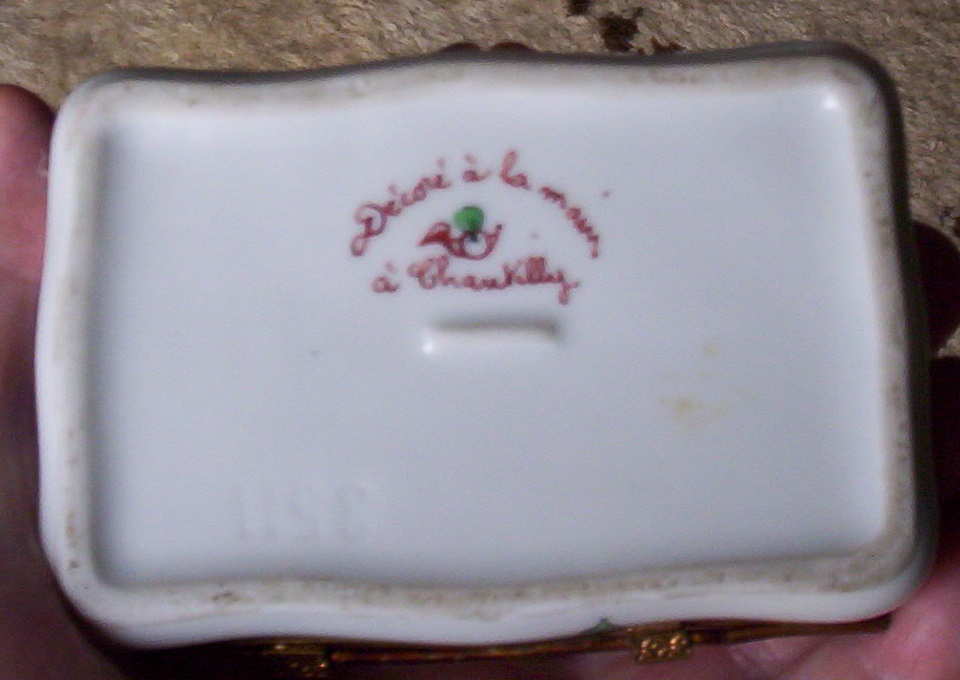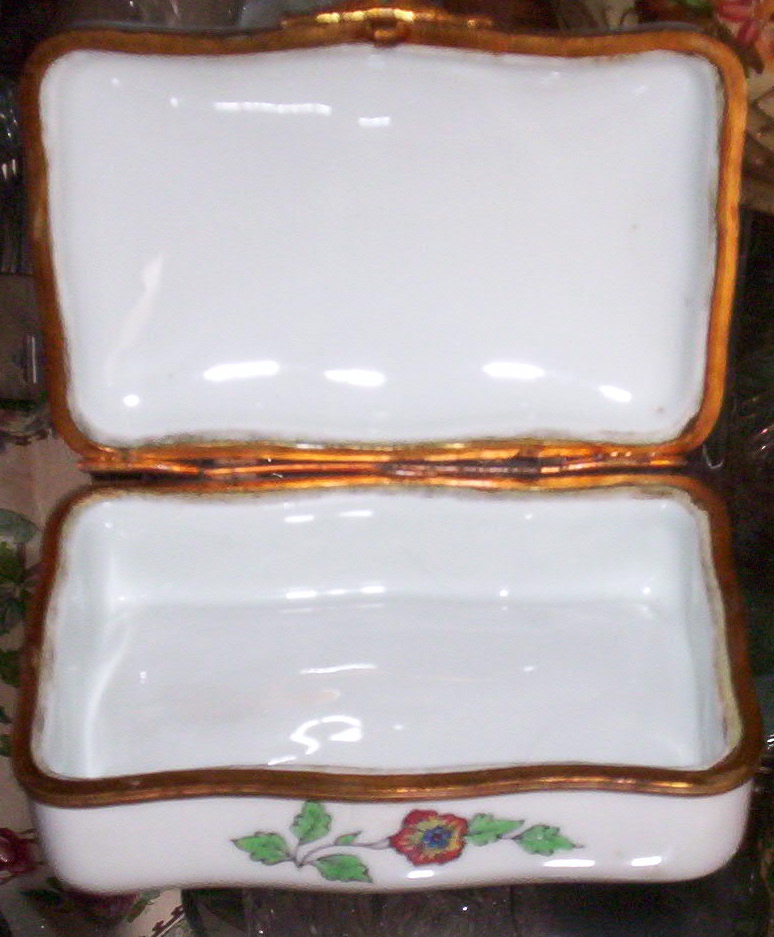days remaining this year
Email Dr. Siegmund
Dr. Siegmund's Links
HISTORY. The Prince de Conde, lord of the chateau and domain of Chantilly, was the patron of the porcelain factory and provided the funds to enable Ciquaire Cirou to carry out experiments. Letters-patent were issued to Cirou in 1735, and therein it is set forth that, for the ten years preceding, he had endeavoured at Chantilly to make porcelain of the same quality as the Japanese; that he had excelled the Dresden porcelain; and that he purposed selling his wares not only in France but abroad as well. In view of these declarations, the King accords Ciquaire Cirou licence, for twenty years, to make at Chantilly all manner of china in imitation of Japanese porcelain. The Prince de Conde was an eager connoisseur and had collected a number of fine examples of Imari ware. In this collection were some excellent specimens of Kakiye mon decoration, and these seem particularly to have inspired much of the early Chantilly decoration-very appropriately, indeed, as imitation of the Japanese porcelain was avowedly one of the chief objects proposed by Cirou. Chantilly never took the lead in originating new styles. The factory was started with the ideal of good imitations, and its successive directors contented them selves with producing admirable adaptations of the successive styles put forth elsewhere. Nevertheless, despite any evidence of originality, the work of Chantilly possessed great distinction and charm, and its appealing beauty ensured constant popularity so long as the factory lasted. It continued until 1789, on the eve of the Revolution, and, after the time of Cirou, was under the directorship of Antheaume, Potter, de Baynal and Lallement in order. ThE BODY. The body of Chantilly china was a soft paste, very like the paste of Saint Cloud, of an even granular texture, with a mellow, creamy or slightly yellowish tinge. It seems, however, to have been more solid and stable in the firing, inasmuch as large flat pieces, such as platters, could be made successfully. These appear not to have been put forth at Saint Cloud. THE GLAZE. There were two distinct types of glaze used at Chantilly, one during the early years of the factory's existence, the other adopted at a later date. The early Chantilly glaze contained oxide of tin which gave it a milky-white, opaque quality that not only enhanced the brilliancy of the decorations but also imparted a strongly individual aspect to the ware and increased its resemblance to the Japanese prototypes. Subsequently, in order to meet the demand of competition with Sevres and Mennecy-Villeroy, this glaze was abandoned and a transparent glaze adopted in its stead. ARTICLES MADE AIVD CONTOUR. The chief products of the Chantilly factory included dinner services, tea and coffee sets, cabarets or solitaires, trays, jugs, statuettes, grotesque figures, flowers, birds, sconces and candlesticks, modelled bouquets, knife handles, ink-pots and writing paraphernalia in general, boxes, caskets, powder boxes, vases, pomatum pots, snuff boxes, patch boxes, covered jars, and various other objects of common use. At first Japanese forms were largely used as models, and many of the platters, dishes, trays and sugar bowls were of lobate form which seems to have been especially favoured. Chinese types of contour, too, were considerably followed, not only for tea-services and articles of tableware but also for the modelled figures and grotesques. At the same time a great many distinctively French forms were adopted and executed with consummate delicacy, refinement and charm. Subsequently, the work done at Sevres supplied not a little material for imitation and the Chantilly renderings were in no wise inferior to their models. TYPES OF DECORATION. The types of decoration characteristic of Chantilly china include the polychrome Kakiyemon motifs , of flowers, sprigs and birds; the more stayed and conventionally disposed Imari motifs with dominant blue, red and gold; Chinese polychrome motifs; underglaze blue decorations of flower sprays , modelled and applied ornaments for white ware, and modelled flowers and figures for knobs and handles on tableware, which were decorated with color; little scattered flowers and sprays in imitation of the Dresden manner; compositions of fruits, flowers and birds in a clear green etched with black; polychrome flowers, fruits and birds like those used at Sevres; embossed patterns of basketwork and other motifs for plate rims and necks of jugs; perforations, and the yellow, blue, green, and rose grounds in the style of Sevres, with the accompaniment of gilding, reserves, and multi-colored flowers. These last, it may be added, were so successfully carried out that it is virtually impossible to tell many of them from Sevres pieces of the same description unless the marks be examined. THE MARKS. The usual mark employed at Chantilly was a carefully drawn hunting horn applied in on-glaze red. Late in the eighteenth century the same mark appears in blue, oftentimes accompanied by letters and figures meant to specify different individual pieces. The fact that instances occur where the Chantilly mark has been removed and the Sevres mark substituted by falsifiers shews how close was often the resemblance between the two wares.

Chantilly procelain hinged box circa 1740



If you are interested in making an offer....or would like additional information send us an email to:
Thank you for your interest!